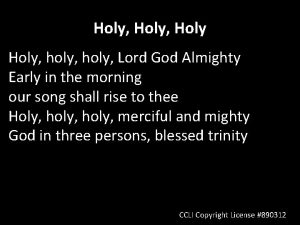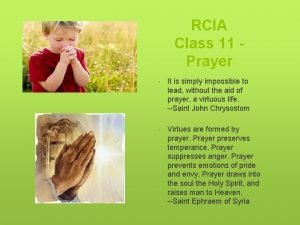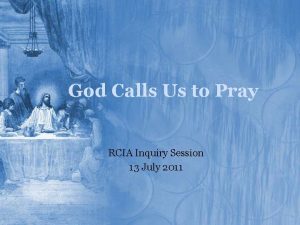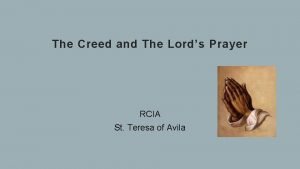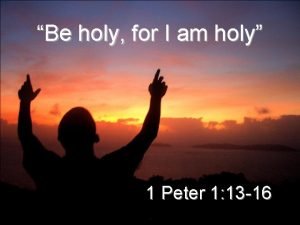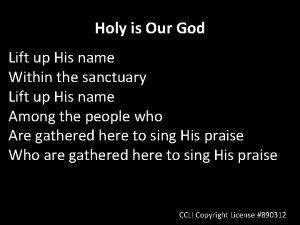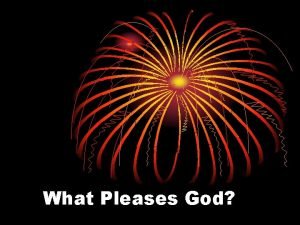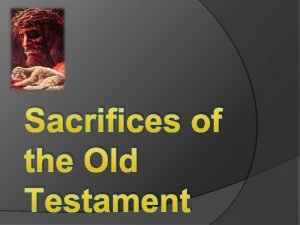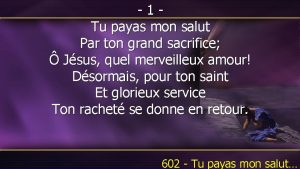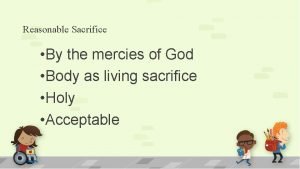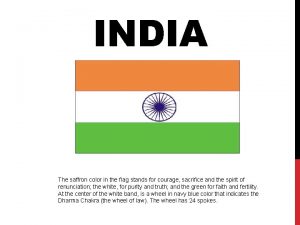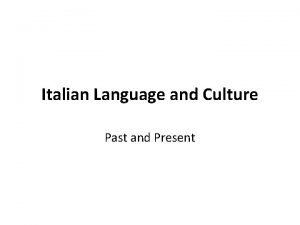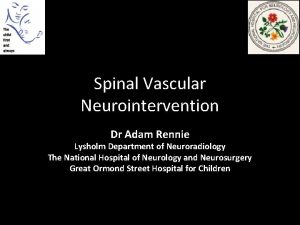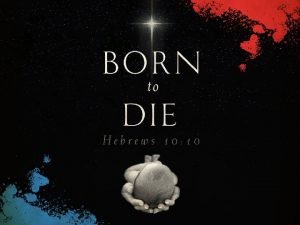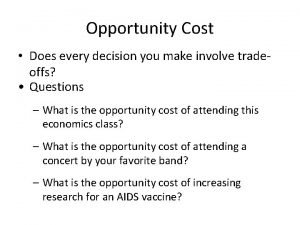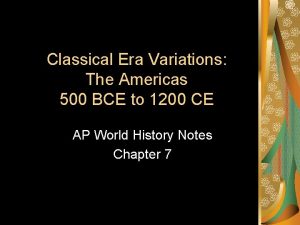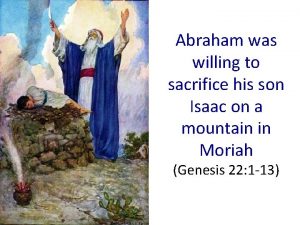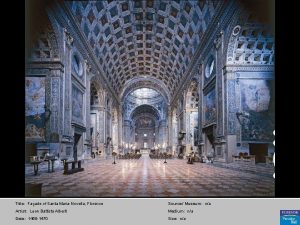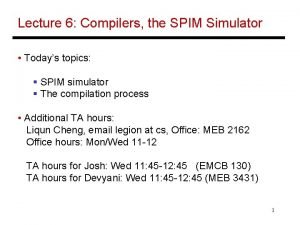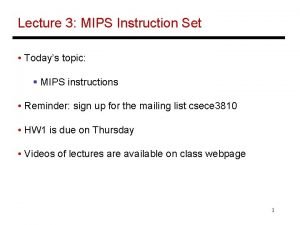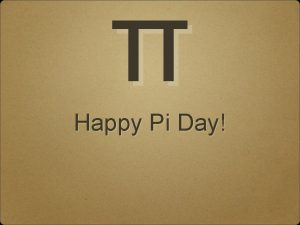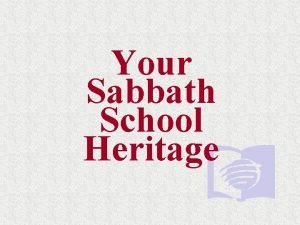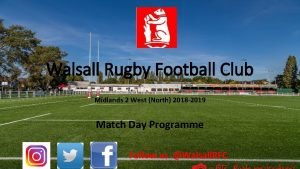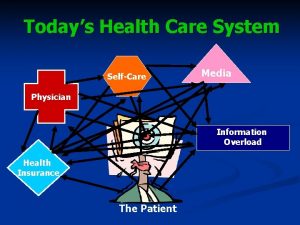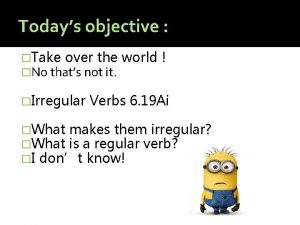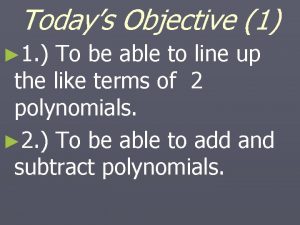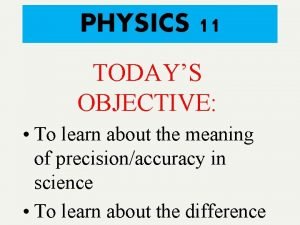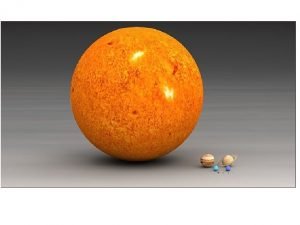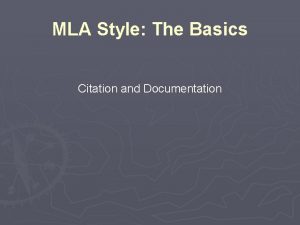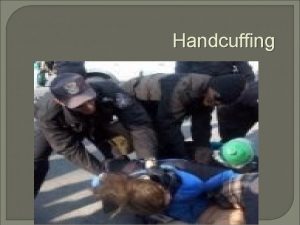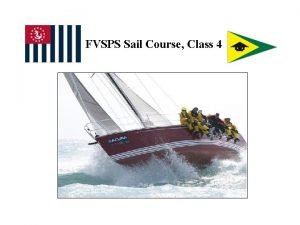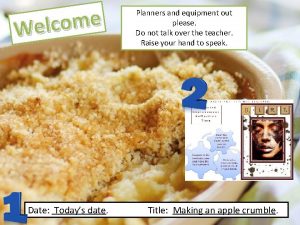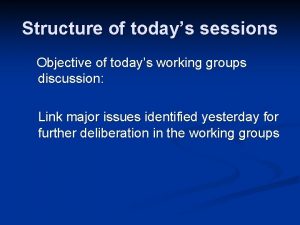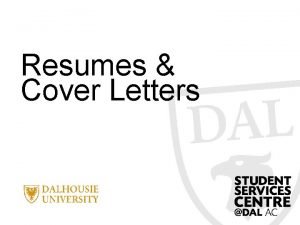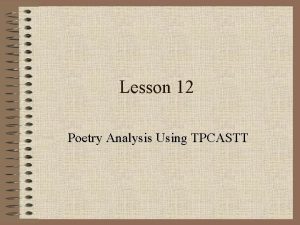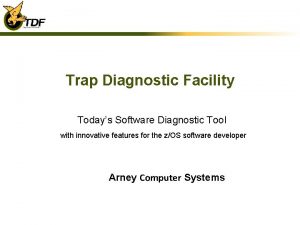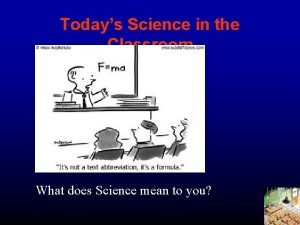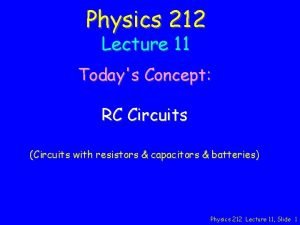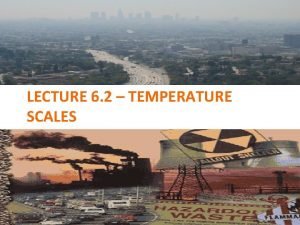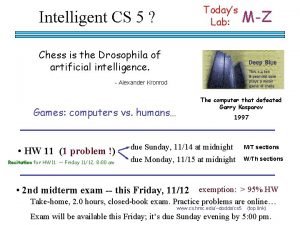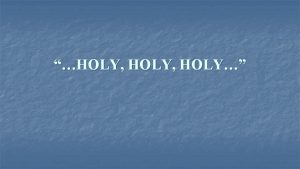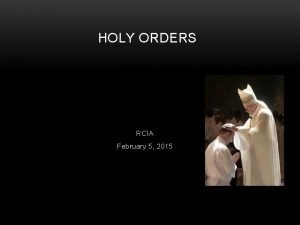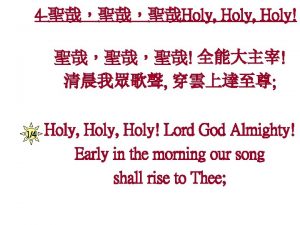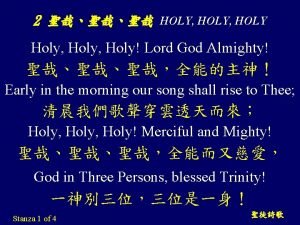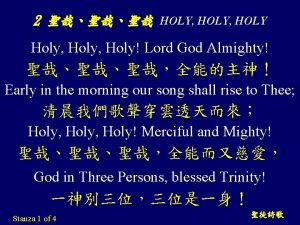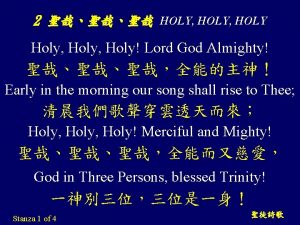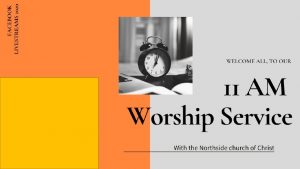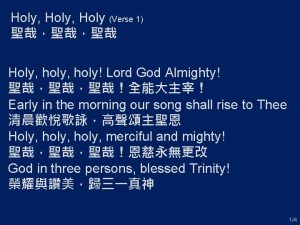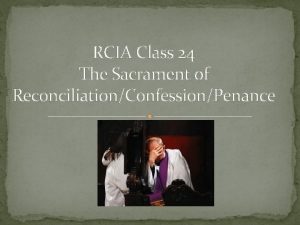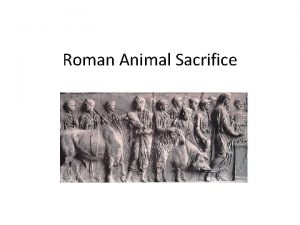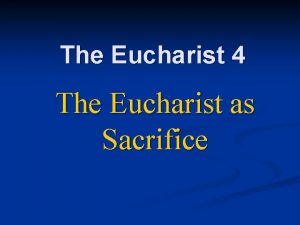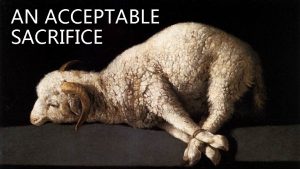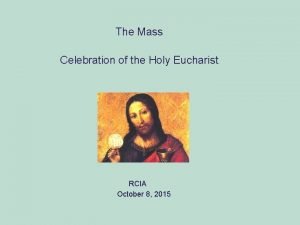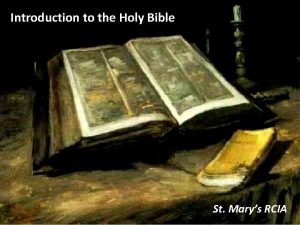RCIA Class 20 Todays topic The Holy Sacrifice



















































































































- Slides: 115

RCIA Class 20 –

Today’s topic… �The Holy Sacrifice of the Mass. - a very important topic. �Last week, we talked about the Real Presence of Christ in the Eucharist, and this week’s topic on the Mass, ◦ These are two of the most important classes of the whole year. ◦ The Eucharist really is the most important sacrament, of all seven sacraments.

You have all been to at least one Mass! �You basically know a little bit about what the Mass is. �The Mass is the supreme act of adoration, love, and worship of God we have as Catholics. �It’s called a “sacrifice” because at every Mass Christ offers Himself to the Father.

What is the history and nature of sacrifice? �If we look at the history and the nature of sacrifice, we see that sacrifice began at the beginning of Creation. ◦ Adam and Eve offered sacrifices to God. ◦ Cain and Abel offered sacrifices to God. �For example, Abel offered a sheep. Cain offered the fruits of the Earth. �The idea of sacrifice is to take something that God has given us, and we give it back to God ◦ (to offer something back to God).

Sacrifice in the beginning �In those days of creation, if they had ten lambs, they would take one of them and sacrifice it. �That would be like a gift that they would give to God, in thanksgiving for all the blessings that they had received. �The idea was tithing, that you give ten percent to God is a very biblical idea. �The first humans knew that they owed some debt of gratitude to God, so they would make a sacrifice, offering the fruits of the Earth, and dedicating that to God. �Sacrifices began in the earliest days of humanity.

The New Sacrifice � We call the Mass the “New Sacrifice” – it’s the sacrifice of Christ. � We know from Scripture that Christ only died once, and that was on the Cross. � Before He died, He said the Last Supper. It says, “While they were eating, Jesus took bread, blessed it, broke it, and gave it to them saying, ‘Take this and eat, this is My Body. ’ Taking a cup, and giving thanks, He gave it to them, and they all drank from it, and He said to them, ‘This is My Blood, of the New Covenant, which is being shed for many. ’” � Christ, at the Last Supper, offered Himself to the Father, under the appearances of bread and wine. We call the Mass the “Holy Sacrifice of the Mass. ”

Every Mass is like being at the Last Supper �At every Mass that we attend, we’re made present at the Last Supper, and Calvary, and we receive the resurrected Lord. �Time and space are pushed aside, and we’re really and truly present at the Last Supper, and at the Cross. �Remember, Christ only died once. As the Book of Hebrews says, “That Christ offered one sacrifice only. ”

How are we present at the Last Supper and Calvary? �What is the Mass? Is it a different sacrifice? Is Christ dying again, and again? ◦ The answer is no. �Christ only died once, but the Mass makes Calvary present here and now. It plants the Cross here in Napoleon, or in Canada, or in New York, or in China. �When the Mass is said, Calvary is made present in that location, and the Last Supper is made present.

Would have you loved to be at the Last Supper with Jesus? � I’m sure that all of us, if we had the choice, would say, “I would have loved to have been at the Last Supper, when Christ gathered the Apostles around and offered Himself, to be able to receive the Lord. ” ◦ We do have that privilege. � We do have that opportunity. ◦ Every time we come to Mass, we’re at the Last Supper. ◦ Every time we attend Mass, we’re at Calvary, standing next to the Blessed Mother, Mary Magdalene, and St. John. ◦ We’re truly present there. Time and space are pushed aside, and the Mass is the re-presentation of Calvary. ◦ The Mass makes Calvary present for us.

We are blessed! �We are actually more fortunate than the Apostles, and the early Christians, because they could only attend the Last Supper once. �We can attend the Last Supper every Sunday, or even every day if we want to. �We’re more blessed than John, Mary, and Mary Magdalene, because they could only stand at Calvary one time. We can actually stand at the foot of the Cross, the altar, every single day, if we

The Mass �At the Mass, the priest (who has been ordained by a Bishop, who has been ordained by previous Bishops, all the way back to those Twelve Apostles), offers the sacrifice. �In the Mass, Christ is the priest, and the victim. ◦ When the priest takes the bread and wine, he doesn’t say, “This is the Body of Jesus, ” or, “This is the Blood of Jesus, ” he says, “This is My Body. This is the cup of My Blood. ” ◦ It’s first person. Christ is present in the ordained priest. The priest disappears, and Christ speaks through the priest, when he says, “This is My Body. This is the cup of My Blood. ”

Christ is the PRIEST! �There’s only one priest – it’s Jesus Christ, but He gives us a share in His priesthood. �When I offer the Holy Sacrifice of the Mass, Christ takes over. He uses my voice, or the voice of the priest as His instrument. He speaks those words, “This is My Body. This is the cup of My Blood. ”

Christ – the priest and victim! �Not only is Christ the priest, He is also the victim. �In the Eucharist, He is offered up. �In the sacrifices of the Old Testament, the priest and the victim are always separate. �The Old Testament priest would sacrifice a goat or a lamb, and he was distinct from the sacrifice.

What is sacrificed at Mass? �Whereas in the Mass, it’s the same – Christ is the priest, and Christ is the victim being offered. �He is the “Lamb of God, ” who takes away the sins of the world. That’s one of the world’s most beautiful titles, the “Lamb of God. ” He is the unblemished Lamb, who offers Himself up to the Father.

An analogy… �Imagine if you were actually at the Super Bowl game, you would be there sitting in the stands, and you would be present there. �Let’s say you couldn’t attend the Super Bowl game, but let’s say somebody video taped it, and they showed it every Sunday for the next year. �You could sit there in your living room, and in a sense, even though you were not physically at the game, the game would be made present for you. You could see the plays, hear the crowd, and see that.

That’s like the Mass… �The Mass makes Calvary present. �When you watch that video tape on a Sunday, that’s not a different sacrifice, that’s not a different football game; it’s the same game. �It’s the one and only Super Bowl of that event, but it’s made present in your living room. ◦ That’s what the Mass is. �The Mass takes Calvary and the Last Supper, and makes them present every single Sunday, even every single day, because we have Mass here every day

The more you put into it, the more you get out of it! �The more you understand about the Mass, the more interesting and exciting it is. �The less you understand about the Mass, the more boring it is. �For example, if you knew nothing about football, and you were trying to watch this game, it would be very boring to you. �If you knew football, it would be very interesting. If you know something personal about the football players, it makes it more interesting. �If you see guys just running around on the field, that might not be of as much interest.

It’s what you know… �It’s the same thing with opera. �You have to bring something to opera in order to appreciate it. You have to bring something to the football game in order to appreciate it. �The more you study the plays in football, the more you know the quarterback, and the running back, and know the strategy of the coaches, the more you can appreciate the football game.

Every Mass is different �It is the same thing with the Mass. �The more you read and study about the Mass, the more you appreciate it. �It is the same thing with opera – if you studied opera, and good music, and have gone to many operas, every one is different. �It is the same thing with the Mass – even though the structure of the Mass stays the same; every Mass is different. �There are different prayers, readings, and homilies. If you want to get more out of the Mass, bring more to it.

What about the Mass? �The first Mass was said by Christ. �We call that the Last Supper.

What is the purpose of the Mass? �The purpose of the Mass is… � 1. To adore God. � 2. To thank God. � 3. To ask God for what we need. � 4. To offer reparation for the sins of the world. �The greatest prayer that we can pray is the prayer of the Mass, because it’s the prayer of Christ, the perfect prayer. �In the Mass, we give God perfect adoration, perfect thanksgiving, perfect petition, and perfect atonement, to make up for the sins of others.

Why should I go to Mass? �Some of the fruits and benefits that we have by going to Mass! � 1. We get grace, which is God’s love and God’s life, that fills us when we attend Mass. � 2. We get the forgiveness of all our venial sins, the smaller sins that we may have. We help to make up for the sins of the past.

Going through the Mass parts… � The best way to do that is to go through the Missal. � First of all, we should explain what the word “Mass” means. � The word “Mass” comes from an Old English word, deriving originally from a Latin word. The last verse of the Mass was “Ita missa est” (“The Mass has ended. Go forth in peace. ”) � The Mass comes from the Latin word meaning “the sending forth. ” � When you attend Mass, you’re gathered together to pray, and worship God, and thank Him, and praise Him, and ask for what you need. � But then, you’re sent out from the Mass, to bring the world to Christ, and to bring Christ to the world.

Mass – sending forth �The Mass is the sending forth of the congregation filled with God’s life, love, and power. �You will also see the word “Liturgy. ” �This comes from the Greek word “liturgia, ” which means “worship” (the “Sacred Liturgy. ”)

Other titles �The Mass has many titles. �Sometimes it’s called the “Lord’s Supper. ” �Sometimes it’s called the “Holy Sacrifice of the Mass. ” �Sometimes it’s called the “Holy Meal. ”

More than a Meal? �There are many different dimensions to the Mass. �It’s not just a meal. It’s not just a sacrifice. �It’s both the sacrifice of Christ offering Himself to the Father, as well as being a Holy Meal. �It’s also called the “Divine Liturgy, ” or the “Sacred Liturgy, ” which means the “Holy Liturgy. ” So, liturgy is the “worship of God. ”

Two parts to the Mass… �There are two parts to the Mass, ◦ 1. The Liturgy of the Word is the first part. �From the beginning of the Mass up to the Offertory ◦ 2. The Liturgy of the Eucharist is the second half of the Mass. �From the offertory to the end of Mass

2 Parts �Consider the football analogy for a second. �At a football game, how many halves are there? Of course, two. ◦ The first half, and the second half. ◦ Halftime is the period in-between. �The Liturgy of the Word and the Liturgy of the Eucharist are the two parts of the Mass. �Halftime is when people bring up the gifts, when they bring up the water, and the wine, and the hosts. That splits the Liturgy of the Word from the Liturgy of the Eucharist

Introductory Rite �If you were to at the Missalette, you’ll see the Order of the Mass. �Those two parts can be divided up into five or six different parts. �The first part is the Introductory Rites. The Introductory Rites of the Mass would be the opening psalm or song. ◦ The idea of singing together brings everybody and puts them on the same page.

Opening Song �In the old days, when the Vikings would have to row the boats, with 100 men on each side of the boat rowing, they would sing songs to get them in a rhythm. ◦ That would get everybody working together. �That’s why we have music at the beginning of Mass, to get everybody singing together, and all their minds focused on the same goal. ◦ The idea of music focuses a person. When they’re singing with other people, it brings them all together as one.

What is the introductory Rite? �The introductory parts of the Mass would be the Opening Hymn. �If it’s not an opening hymn, you could do a little Entrance Antiphon. ◦ Those are found in the Missalette. �Then we have the Greeting from the priest after we make the sign of the cross calling to mind our baptism.

The Mass begins… �…with the Sign of the Cross. �We begin with “In the Name of the Father, and of the Son, and of the Holy Spirit. ” ◦ Notice that it’s the Name of the Trinity. �We talked about the Trinity in an earlier class. ◦ Just a review, the Name of God is singular. ◦ We don’t say in the “Names” – that would be plural, that would be three Gods. ◦ We say in the “Name, ” which is One God, and yet, we say, “Father, Son, and Holy Spirit, ” which are three Divine Persons. We begin by making the Sign of the Cross. All of our prayers begin with the Sign of the Cross.

Greeting �Then there’s a greeting. �The priest can choose any one of these three greetings. He could say, ◦ “The grace of our Lord, Jesus Christ, and the love of God, and the communion of the Holy Spirit be with you all. ” � That’s a Trinitarian greeting. That’s the one I usually use ◦ Or, he could say, “Grace to you and peace from God our Father, and the Lord Jesus Christ. ◦ Or, he could say, “The Lord be with you, ” �And to all of these we answer and we pray, “And with your spirit. ”

Greeting has meaning �Notice, the priest doesn’t say, “The Lord is with you, ” because the Lord might not be with everybody in the congregation, if somebody is in the state of mortal sin, or they have turned against God. �The prayer is, “May the Lord be with you. ” It’s a prayer, “the Lord be with you. ” Then we say, “And with your spirit. ”

Optional use of Holy Water �Then comes the Blessing and Sprinkling of Holy Water. �This is usually only done once or twice a year. �Normally, it’s not done on Sundays, but it could be. If that’s the case, then the priest blesses the Holy Water, and walks through and sprinkles everybody with the Holy Water. �This concludes the introductory Rite

2 nd part of the Liturgy of the Word �Second, comes the Penitential Rites. �The word “penitential” comes from the Latin word which means “to offer reparation, ” or “to be sorry. ” �For example, a prison is called a penitentiary – that’s where they do penance. That’s the original idea of prison, where somebody would go and do penance for their crime, or for their sin, to make up for that. Now, most prisons are more reformatory.

What is the penitential rite? �Now we come to the Penitential Rites. �A rite is a part of the Mass, like the sacred rites, or the sacred duties, or the sacred sacrifices. �During the Penitential Rite the priest says, “Brethren (brothers and sisters), let us acknowledge our sins, and so prepare ourselves to celebrate the sacred mysteries. ” �It is during this time, that we call to mind our sins. �Before we begin in the worship of God, we first want to tell God we’re sorry for our sins. Now we think about our sins, as we offer our hearts to him and look where we have failed him.

The crucifix helps us to focus � What Bishop Sheen always did at this point, instead of trying to go through a whole laundry list of all the sins that he could remember, he basically just looked at the Crucifix, and looked at the effects of his sins, what his sins did to Christ. � He looked at the five wounds: the Crowning with Thorns, the wounds in the hands, and the side, and the feet. He said, “That’s what my sins did to Christ. ” � When you come to Mass, there’s always a Crucifix that’s present. Sometimes it’s on the altar, or on the high altar above the tabernacle. � When we think about our sins try to look at the Crucifix, and think of how much Jesus suffered, that He took our sins on the Cross, and be sorry for your sins, of what they did to Christ. Think of how much God loves us, by dying for us

The Confiteor �After we contemplate our sins, we make a public confession: �“I confess to Almighty God, and to you my brothers and sisters, that I have greatly sinned, in my thoughts and in my words, in what I have done and in what I have failed to do (striking our breast here three times, one time on each “through) through my fault, through my most grievous fault; therefore I ask blessed Mary ever. Virgin, all the angels and saints, and you my brothers and sisters, to pray for me to the Lord our God.

Beat the breast �We’re now doing what the Bible says, “Confess your sins one to another. ” Then we say, “I have sinned through my own fault. ” (Where we strike our breast 3 times. ) “Through my fault, through my most grievous fault. ” �We beat our breast; this was a sign in the Bible of being sorry. That’s what they did in the Old Testament to tell God they were sorry. They put on sack cloth, and ashes on their head, and they beat their breast.

How do we offend God? �This ◦ ◦ is how we offend God: in our thoughts, in our words, in what we’ve done, and what we’ve failed to do.

Give us an example � We can sin through our thoughts by wishing evil upon somebody. � We can sin through our words by using God’s name in vain, or by lying. � We can sin through what we’ve done, through an action (stealing, for example). � Or, we can sin by what we’ve failed to do. � I remember once, there was a child that said to his mom, “Will you punish me for something I didn’t do? ” She said, “Of course not. ” The boy says, “I didn’t clean my room, and I didn’t do my homework. ” � Of course, we can sin by what we’ve failed to do. For example, by not going to Mass on Sunday. That’s something we should do. If we fail to do it, it’s wrong. Or, not being generous to the poor, for example

Telling God we are sorry, and… �We tell God we’re sorry for all of our sins. ask Mary, the Angels and the saints, and each other, to pray for us, to the Lord our God. �You want to take this very seriously. At every Mass, you’re asking somebody to pray for you; you’re promising to pray for them. Don’t just go home, and come back the next Sunday, and not fulfill this. Make sure you’re praying for everybody who attended that Mass. �You’re asking people, “I have the responsibility to pray for you, and you have the responsibility to pray for me. ” And it says, we’re asking each other to pray for one

Asking God forgiveness �Then, the priest says, “May Almighty God have mercy on us, forgive us our sins, and bring us to everlasting life. “ �That’s a prayer of forgiveness.

Effects of the priests prayer… �This prayer actually does take away sins, what we call venial sin. �Does everybody remember what a venial sin is? It is the smaller sins. �This prayer does not take away mortal sin – those have to be confessed in Confession. �Mortal sins are serious violations against the Ten Commandments. �Venial sins are smaller sins – tiny white lies, getting angry with somebody - they’re minor sins. At this time of the Mass, our smaller sins are forgiven

Other ways to have venial sins forgiven �The other ways that you can have your venial sins forgiven are that when you come into Mass, dip your fingers in the Holy Water, and bless yourself. �When you do that, and you are sorry for your sins, then Jesus forgives your venial sins. �This prayer, “I confess to Almighty God, to you, my brothers and sisters…” forgives venial sins, as well as when you bless yourself with Holy Water

Lord, have mercy �Then, we have this passage, where we say, “Lord have mercy. Christ have mercy. Lord have mercy. ” �This is a Trinitarian theme. ◦ The “Lord have mercy” is the Father; ◦ “Christ have mercy” is the Son; ◦ and “Lord have mercy” is the Holy Spirit. �This is called the Kyrie, which is the Greek word for “Lord. ”

The Gloria �After this, we come to the Gloria. “Gloria” is the Latin word for “glory, ” as in “Glory to God in the Highest. ” �This prayer is said every Sunday except during Advent and Lent, which are penitential seasons. �The Gloria is said in celebration. This is a prayer of praise. It’s a very ancient prayer. We praise the Father, the Son, and the Holy Spirit.

Gloria is biblically based �Remember when, after Christ was born, the Angels came, and they began to appear to the shepherds? �They said, “Glory to God in the Highest, and on Earth, peace to people of good will. ” That’s where the first part of this prayer comes from. �You might remember that from the Charlie Brown Christmas episode - the idea that the Angels were the ones who said this prayer originally.

Praise �Next, we praise the Heavenly Father. �We bless him; �We adore Him; �We glorify Him; �And we give him thanks for his great glory.

Gloria continued �We praise Christ, the only begotten Son; �We praise Christ, the Lamb of God, ◦ Who takes away the sins of the world, and has mercy upon us; ◦ Who receives our prayer ◦ Who is seated at the right hand of the Father. �Then, we praise the Holy Spirit.

Opening Prayer �Next comes the Opening Prayer, �You are able to follow along in the Missalettes during Mass. �For example, this coming Sunday is April 2 nd, so take a look at the missalette, and you will see that there’s this prayer, from which the priest prays.

Liturgy of the Word �The Liturgy of the Word has to do with the Word of God, which is Sacred Scripture. �If we were to look at the readings found for Sunday April 2 nd. We will note that these are the readings used during Mass this Sunday. �What you’ll find is that the First Reading is always taken from the Old Testament. In this case, it’ll be taken from the Book of the Prophet Ezekiel.

Cycles of readings � One thing you should remember is that, whenever you attend Mass, the Readings at Sunday Mass are in the three-year cycle, years A, B, and C. � So, if you go to Sunday Mass faithfully for three years, you’ll hear almost the entire Bible being read to you. ◦ Let’s say you’re 30 years old. That means that you’ve heard the Bible read to you 10 times. Isn’t that amazing? ◦ Why is it that some Catholics don’t know the Bible? Maybe it’s because they weren’t listening, or, they really didn’t study the Bible. � If you go to daily Mass, those are on the two year cycle. If you go to daily Mass Monday through Friday, you’ll hear the whole Bible being read to you every two years.

Who reads the readings? �The Readings are done usually by lay people, a lay man or a lay woman. �They come up to the pulpit, and they read the Readings from the lectern, the ambo, or the pulpit (three different names for the same thing). �Anybody can read the Readings

After the 1 st reading… �Then we have the Responsorial Psalm. �It’s called this because we’re supposed to respond at different times. �In this case this Sunday, we’ll say, “With the Lord there is mercy and fullness of redemption. ” �You repeat that – it’s called a response. You respond to that. �The reader or the cantor will sing or say the Psalm, and then you respond with the same antiphon.

After the Psalm is our second reading �This weekend’s Second Reading is from St. Paul’s 1 st letter to the Corinthians. �Usually the Second Reading is from the Acts of the Apostles, the Book or Revelation, or one of the Letters, like one of Letters from St. Paul. �In this case, it’s from the Letter of Paul to the Romans. One thing you’ll find when you read the Readings, is that the First Reading and the Gospel always have the same common theme. The Second Reading doesn’t always have the same theme.

Gospel Acclamation �After the Second Reading comes the Gospel Acclamation, which is the Alleluia verse, which is not said during Lent. During Lent, we say “Praise to you Lord Jesus Christ King of endless Glory!” �We say the Alleluia, which is a Hebrew word which means “praise, ” as in “Praise the Lord. ”

Gospel �Next comes the Gospel. �To read the Gospel, a person has to be a deacon or a priest. �Only a priest or deacon can read the Gospel at Mass. �The priest says, “The Lord be with you. ” You respond, “And with your spirit. ” “A reading from the Holy Gospel according to Matthew for this weekend ◦ The gospel could be from Matthew, Mark, Luke, or John

Sign yourselves �Who remembers what you do then after the priest says a reading from the holy gospel according to N. ? �You take your thumb, and you make the Sign of the Cross three times: ◦ on the forehead, ◦ the lips, ◦ and over the heart.

Why sign ourselves? � The reason why we do that is very Trinitarian, because there are three crosses, and three Persons in the Blessed Trinity. � What we’re really saying is, “Lord, enlighten my mind with your Holy Word, that I may understand with my mind. May I profess it with my lips, and may I accept and believe it in my heart. ” � See, many Catholics, I’m sure, come to Mass every Sunday for many (10, 15, or 50) years, and they’ve done this, and they’ve never realized why they’ve made three crosses. � At the end of the Gospel reading, the priest or deacon says, “The Gospel of the Lord. ” to which you respond, “Praise to You, Lord Jesus Christ. ”

After the readings and the gospel. . �After that comes the Homily. �The homily is usually a 10 to 15 minute sermon. �In the homily, “The homilist describes how the Good News (the Gospel of Christ’s saving message) applies to this specific community on this particular day. ” �The priest should give his homily based upon the Readings, or based upon one of the teachings of Christ and the Church. It says we sit for the homily.

Profession of Faith � Reciting the Creed ◦ Everyone stands ◦ Nicene Creed or the Apostles Creed ◦ Nicene Creed – comes from the Council of Nicaea year 325 ◦ Sums up all that the Magisterium (the teaching authority of the Church) has taught for the past 2, 000 years ◦ “I believe in one God, the Father almighty, maker of heaven and earth…” ◦ Bow at “and by the Holy Spirit was incarnate of the Virgin Mary, and became man. ”

General Intercessions � Remain standing � Also called Prayer of the Faithful � Petitions are read “We pray to the Lord” Response “Lord hear our prayer” � We pray 6 – 10 different petitions at each Mass ◦ For example: “We pray for this year’s RCIA candidates and catechumens who will be entering the Church this Holy Saturday may they be blessed with an abundant faith. ” “We pray to the Lord. ” Response “Lord hear our prayer” � Concludes the Liturgy of the Word

Break

Liturgy of the Eucharist � Focuses ◦ ◦ ◦ on offering The collection offering The offering of bread and wine to be consecrated The sacrifice itself The consecration by the priest The Holy Communion of the faithful

Presentation of the Gifts � Everyone sits � Song is sung � Collection is taken ◦ Giving to God our first fruits � Offertory Procession � The gifts are brought forward ◦ Collection ◦ Bread & wine � Priest & servers meet the procession at the foot of the altar to receive the gifts

The Gifts � Bread , wine, and the collection are brought forth � Symbolism – the lay people bring up their gifts ◦ They offer themselves upon the paten and in chalice ◦ We should do that, offer up all our prayers, works, joys, and sufferings ◦ Place our entire self in the chalice and on the paten and ask God to transform us into Christ

Preparation of the Gifts � The altar is prepared � Priest lifts the host ◦ "Blessed are you, Lord, God of all creation. Through your goodness we have this bread to offer, which earth has given and human hands have made. It will become for us the Bread of Life. ” Response “Blessed be God forever”

Preparation of the Gifts � Priest pours the wine into the chalice and adds a few drops of water to symbolize the union of the divinity and humanity of Christ � He says “May we come to share in the Divinity of Christ, who humbled Himself to share in our humanity. ” � Priest lifts the chalice ◦ “Blessed are you, Lord, God of all creation. Through your goodness we have this wine to offer, fruit of the vine and work of human hands. It will become for us our spiritual drink. ” Response “Blessed be God forever”

Water and the Wine �The wine represents the Divinity of Christ and the water is His humanity �When the water is placed in the wine it shows that Christ is one, that His humanity and His Divinity are one Person of Christ �The water also represents our humanity, that we are to be joined to Christ �When the water is placed in the wine, we can no longer separate it, the water has become part of the wine, we become one with the Lord when we receive Him in Holy Communion

Washing of the Hands � Priest prays, “May the Lord wash me of my inequities and cleanse me of my sins. ” � Originated in the early Church � People would bring up vegetables, chickens, clothing for the poor with the bread and wine ◦ The priest would have to collect all of this - he would wash his hands before continuing with the Sacrifice of the Mass � Also was a Jewish tradition during the time of Jesus, the high priest would wash his hands before making the sacrifice of killing the unblemished spotless lamb on the day of the Passover � Now we just bring the basket with money – the washing is symbolic

Preparation of the Gifts � Everyone stands � “Pray my brothers and sisters that my sacrifice and yours may be acceptable to God, the almighty Father” � Response “May the Lord accept the sacrifice at your hands for the praise and glory of his name, for our good and the good of all his holy Church. ” � Prayer over the Gifts ◦ Priest says the prescribed prayer. Response “Amen”

Preface �Beginning of Eucharistic Prayer �Priest – “Lord be with you” – Response “And with your spirit” �Priest – “Lift up your hearts” – Response “We lift them up to the Lord” �Priest – “Let us give thanks to the Lord our God” – Response “It is right and just” �Priest continues with the rest of the preface

Holy… � Sung or spoken � Also called Sanctus – means holy � Trinitarian – Holy, Holy said three times “Holy, Holy Lord God of hosts. Heaven and earth are full of your glory. Hosanna in the highest. Blessed is he who comes in the name of the Lord. Hosanna in the highest. ” Heaven and earth are united at this time

Eucharistic Prayer �Everyone kneels - the holiest part of �Common elements are praise and the Mass thanksgiving to God �Priest has several that he can choose from �Only a priest can say, it recalls what happened at the Last Supper �Epiclesis – priest begs the Father to send the holy Spirit, so that the offerings may become the body and blood of Christ and that the faithful, by receiving them, may themselves become a living offering to God (CCC 1105) �The sequence of events is retold until the part where Jesus takes the bread

Eucharistic Prayer �Then the priest changes from third person to first person and speaks as if Christ himself were standing holding the host. The priest acts in the person of Christ (in persona Christi). �The priest uses the exact same words that Jesus used at the Last Supper at the Consecration �Priest takes the Host - “Take this, all of you, and eat of it, for this is My Body , which will be given up for you” �He elevates the Host for everyone to see �The bells are rung �The priest genuflects

Eucharistic Prayer �Priest takes the chalice – “Take this, all of you, and drink from it, for this is the chalice of My Blood, the Blood of the new and eternal covenant, which will be poured out for you and for many for the forgiveness of sins. Do this in memory of me. ” �He elevates the chalice for everyone to see �The bells are rung �The priest genuflects �At the raising of the Eucharist & Chalice – can pray to yourself “My Lord and my God”

The Mass shows the Death of Christ � It does this by the separate consecration of the Host and the wine � The separation of the Body and the Blood of Christ represents the death of Christ ◦ Once His Blood left His Body, He died, the separation of His Body from His Blood ◦ This is shown in an unbloody way at the Sacrifice of the Mass, by a separate Consecration

Why are there bells? �They signify the holiest moment of the Mass �Necessary before microphones – people in the way back of the churches could hardly hear anything that the priest was saying, so they needed a signal that the Consecration was happening

The Consecration �During the Consecration a miracle occurs �The bread and wine change into the body and blood of Christ – Transubstantiation �Only and ordained priest has the authority to say Mass and consecrate the bread and wine �We kneel before the Eucharist because it is no longer a piece of

Other names for the Eucharist �Holy Eucharist �Communion and Holy Communion �Sacrament and Blessed Sacrament �Sacrifice and Holy Sacrifice �True Presence and Real Presence

Mystery of Faith – Sacred Recalling � 3 choices ◦ “We proclaim your Death, O Lord, and profess your Resurrection until you come again. ” ◦ “When we eat this Bread and drink this cup, we proclaim your Death, O Lord, until you come again. ” ◦ “Save us, Savior of the world for by your Cross and Resurrection you have set us free. ”

Parts of the Eucharistic Prayer �We pray for the needs of the Church and the world �We pray for the Pope �We pray for those that have died �We pray for all the intentions �We pray that one day we’ll get to heaven to be with the Lord, the Blessed Mother, the Apostles, and the saints

Doxology �Priest raises the Eucharist and the Precious Blood �“Through him, and with him, and in him, O God almighty Father, in the unity of the Holy Spirit, all glory and honor is yours, for ever and ever. ” Response “Amen” ◦ Amen = I believe

Communion Rite �Everyone stands �The Lord’s Prayer �After the Our Fathere is a prayer – that the Lord will deliver us from evil, grant us peace, protect us from sin and anxiety, as we wait for the coming of Christ �Then this prayer “For the kingdom, the power, and the glory are Yours, now, and forever. ” �Added after Vatican II in the 1960’s

Different than Protestant Our Father � Protestant Our Father “For Thine is the kingdom, the power, and the glory, forever and ever. Amen. ” � We are each using different versions of the same ancient prayer � Why don’t Catholics say that part? ◦ We do every Mass ◦ We don’t say it in the regular Our Father (not at Mass), because it wasn’t said by Christ ◦ The last verse was added by some early Christians but it wasn’t the prayer that Jesus taught us

Sign of Peace �Priest – “Lord Jesus Christ who said to your Apostles: Peace I leave you, my peace I give you, look not on our sins, but on the faith of your Church, and graciously grant her peace and unity in accordance with your will. Who live and reign for ever and ever. ” Response “Amen” �Priest – “The peace of the Lord be with you always. ” Response “And with your spirit. ” �Priest – “Let us offer each other the sign of peace. ” �Shake hands “Peace be with you”, family members may hug or kiss

Lamb of God �Also called Agnus Dei �Lamb of God you take away the sins of the world, have mercy on us. Lamb of God you take away the sins of the world, grant us peace. �Agnus Dei, qui tollis peccata mundi, miserere nobis. Agnus Dei, qui tollis peccata mundi, dona nobis pacem. �Sometimes use a combined English/Latin version �After the Lamb of God everyone kneels

Breaking of the Bread � During the Lamb of God � The priest breaks the Host � He then takes a little piece of the Host and places it in the chalice; that represents the resurrection ◦ The Body and Blood of Christ are reunited in a mystical way at Mass � The Mass shows forth the death and the Resurrection of Christ ◦ Separate consecration of the host and the wine ◦ Uniting of the Body and Precious Blood

Holy Communion � Priest – “Behold the Lamb of God, behold him who takes away the sins of the world. Blessed are those called to the supper of the Lamb. ” � Response – “Lord, I am not worthy that you should enter under my roof, but only say the word and my soul shall be healed. ” ◦ Comes from the Bible when the Centurion asked Jesus to heal his servant, Jesus intends to go to the house, but the Centurion feels he is unworthy to have Jesus come to his home, Jesus admires the man’s faith and cures the servant from afar. ” (Matthew 8: 8 and Luke 7: 6) � Priest and the Extraordinary Ministers of Holy Communion receive Communion

Receiving Communion � Before receiving –some sign of reverence for the Real Presence is required ◦ Bow, Sign of the Cross, genuflect or kneeling � Eucharist can be received either on the tongue or on the hand � If received on the hand it must be consumed right away

Receiving Communion � Eucharist ◦ Minister of Holy Communion – “The Body of Christ” Response “Amen” � Precious Blood ◦ Minister of Holy Communion – “The Blood of Christ” Response “Amen” � Our response of “Amen” – “I believe” confesses our belief that Jesus is truly present in both the bread and the wine � After receiving Communion ◦ Return to your pew, kneel and pray silently

Proper Disposition � Must be properly disposed in order to receive Holy Communion � Unaware of any mortal sins that haven’t been confessed � Don’t publically dissent from Church teaching � Fasted (not eating or drinking anything except water) for one hour before receiving Holy Communion ◦ The fast is one hour before Communion, not before Mass

Who Cannot receive? � You must be in communion to receive Communion ◦ Means being united with all that the Church teaches, prays, and does � Non-Catholics � Catholics in a state of mortal sin � Catholics in an invalid marriage � Catholics who’ve broken the one-hour fast � Catholics who haven’t made their first confession and First Communion

After Communion � Plates and chalices are cleaned and put away � Priest sits down – everyone sits � Prayer after Communion ◦ Everyone stands ◦ Priest says the appropriate concluding prayer. Response “Amen”

Concluding Rites � Greeting, Final Blessing, and Dismissal � Greeting ◦ Priest: “The Lord be with you. ” Response: “And with your spirit. ” � Final Blessing ◦ Priest: “May almighty God bless you, the Father, and the Son, and the Holy Spirit. ” Response: “Amen. ”

Dismissal � Priest ◦ ◦ has four dismissals to choose from Go forth the Mass is ended Go and announce the Gospel of the Lord Go in peace, glorifying the Lord by your life Go in peace � Response to all four – “Thanks be to God” ◦ Doesn’t mean thank God Mass is over ◦ Giving thanks to God for all the blessings we’ve received � We are being sent into the world to spread the Word of God and put it into practice

Exit Procession � Song is sung � Priest and altar servers process to the back of the Church. � Don’t leave until the Priest has completed his exit � Don’t get in the habit of leaving Mass early ◦ The only one that left the Last Supper early was Judas, things didn’t wind up too well with him

Miscellaneous � If you go anywhere in the world the Mass is the same. ◦ The language may be different but the Mass is the same � There is a lot of rich mystical symbolism in Mass � Whenever you attend Mass you can offer that Mass for somebody or something

Sunday Attendance � Not just expected, it’s a moral obligation � Mortal sin if missed without a worthy excuse � Lords Day ◦ Obligation to refrain from unnecessary work on Sunday – day of rest ◦ Attending Mass is the only way that a Catholic can fulfill the 3 rd Commandment to keep holy the Sabbath day

Fully Participate �The full, conscious, and active participation of the faithful is required by singing, praying, speaking, sitting, kneeling, and so on �Every person should be communicating with God during Mass �Being disposed to, cooperative with, and willing to accept the supernatural divine graces being bestowed at the Mass should be the goal of everyone present �Being inattentive, just being there but not consciously participating is a sin of sloth

Understand the Mass � To understand the Mass is to understand Catholicism � The more you understand about the Mass the more interesting and exciting it is � The less you understand about the Mass the more boring it is � Think about football ◦ The more you know about football – how the game is played and strategies it can be quite interesting ◦ The less you know about football the less interesting it is

Understand the Mass � The Mass is the same ◦ You have to bring something to Mass in order to appreciate it ◦ The more you read and study about the Mass the more you will appreciate it ◦ Even though the structure of the Mass stays the same, every Mass is different �Different prayers, readings, homilies ◦ If you want to get more out of the Mass, bring more to it ◦ Participate in the Mass rather than coming as a spectator ◦ Mass is a prayer – prayer is interactive

Three stages of the spiritual life �Writings from several saints �Purgative Stage, Illuminative Stage, and the Unitive Stage �During Mass we go through the three stages

Purgative Stage � Penitential Rite ◦ Telling God you’re sorry for your sins and ask His forgiveness ◦ We pass through a time of purgation (cleansing)

Illuminative Stage �Enlightening the mind to know God �Done through the readings, the Homily, the Creed, and the Prayers to the Faithful

Unitive Stage � To be one with God � Occurs in Holy Communion ◦ We become one with God when we receive Communion

Mass gets us to heaven � In heaven we have union with God � We have to pass through the Purgative and Illuminative Stages and into the Unitive Stage � If we don’t achieve the Purgative and Illuminative in this world we have to go to Purgatory ◦ We can’t go to heaven with even the smallest stain of sin on your soul � The only people that get to heaven are perfect � Purgatory is for those who die in God’s grace and friendship but still need to be cleansed (purified, perfected)

Different postures used at Mass �Let’s go back for one second to talk about the different postures that we have at Mass, because some people wonder, “Why is it that we stand, sit, kneel, stand, sit, and kneel? ” �Some people call them “Catholic Aerobics, ” or “Catholic Gymnastics. ” �When it comes down to it, every one of the postures at Mass has a specific reason.

Different postures used �At the beginning of the Mass, we all stand, because we’re all singing the Opening Hymn. We’re gathered together. The priest is coming in, so out of respect for the priest, who is the presence of Christ at that liturgical function, we all stand. �We stand for the Opening Prayers and the Greetings. �Then it says we sit for the Readings. Standing is done out of respect, and to prepare ourselves for the beginning of

Why do we sit? �We then sit. �Sitting is a posture of receptivity. �We sit, and we listen to the Word of God. �We soak in the Word of God when we sit for the Readings.

Stand for the gospel �But then, we stand for the Gospel. �The Gospel is the most important part of the Bible. �All of the Bible is important, of course, because it’s all the inspired Word of God. �The Gospel is the holiest part of the Readings, because it’s about the Life of Christ. �All the Old Testament passages lead up to the Life of Christ; but the Gospel is the Life of Christ, so we stand out of respect for the Gospel.

4 types of Prayer �Four Types �Mass Part of Prayer in Catholicism ◦ Adoration – praising God �The Gloria �Contrition – Asking God forgiveness ◦ The Confiteor and Penitential Rite �Petition – Asking God for a favor ◦ The Prayer of the Faithful (General Intercessions) �Thanksgiving – Showing God gratitude ◦ After Holy Communion when we show gratitude for all the graces given at Mass

Still to come �Next Week – no class and Mass will be at 8 AM – Penance Service in Zeeland � 2 weeks – Holy Orders and Religious Life � 3 weeks – The Sacrament of Penance � 4 weeks – no class Spring education days �Classes still to come ◦ The Sacrament of Matrimony ◦ Anointing of the Sick and Suffering ◦ The Last Four Things ( Heaven, Hell, Death, Judgment) ◦ Discipleship, Stewardship and Evangelization
 Glory glory oh god almighty
Glory glory oh god almighty Holy holy god almighty there is none like you
Holy holy god almighty there is none like you Opening prayer for catechism class
Opening prayer for catechism class Prayer of adoration
Prayer of adoration Have a class today
Have a class today Todays class
Todays class Welcome to today's class
Welcome to today's class Presentation of the creed
Presentation of the creed What's the holy spirit
What's the holy spirit Be holy for i am holy
Be holy for i am holy Lift up his name
Lift up his name Holy holy hol
Holy holy hol Deuteronomy 20:8
Deuteronomy 20:8 Example of a clincher sentence
Example of a clincher sentence Narrowed down topic
Narrowed down topic Blame!
Blame! To obey is better than sacrifice
To obey is better than sacrifice For the wages of sin is death meaning
For the wages of sin is death meaning Tu payas mon salut chant d'esperance
Tu payas mon salut chant d'esperance Saffron stands
Saffron stands Peithô
Peithô To what animal is hsiang lin’s wife likened to?
To what animal is hsiang lin’s wife likened to? Courage and sacrifice
Courage and sacrifice Hebrews chapter 9 niv
Hebrews chapter 9 niv Concept of character formation
Concept of character formation Sacrifice elton john
Sacrifice elton john Theme for sacrifice
Theme for sacrifice Claude fraysse
Claude fraysse The sacrifice of noah michelangelo
The sacrifice of noah michelangelo The feast of sacrifice in turkey
The feast of sacrifice in turkey Sacrifice
Sacrifice Sacrifice and offering you did not desire
Sacrifice and offering you did not desire Whats an opportunity cost
Whats an opportunity cost Pok a tok stadium
Pok a tok stadium Isaac sacrifice
Isaac sacrifice Title
Title The crucible elizabeth proctor quotes
The crucible elizabeth proctor quotes What do the stones symbolize in the lottery
What do the stones symbolize in the lottery Obey your teacher subject and predicate
Obey your teacher subject and predicate Generations
Generations Todays with apostrophe
Todays with apostrophe Todays worldld
Todays worldld Whats todays temperature
Whats todays temperature Todays globl
Todays globl Whats todays wordlw
Whats todays wordlw Chapter 13 marketing in today's world worksheet answers
Chapter 13 marketing in today's world worksheet answers Todays plan
Todays plan Todays sabbath lesson
Todays sabbath lesson 25 creative ideas for sabbath school
25 creative ideas for sabbath school Walsall rugby
Walsall rugby Todays health
Todays health Todays objective
Todays objective Todays objective
Todays objective Todays objective
Todays objective Todays whether
Todays whether Todays vision
Todays vision Todays objective
Todays objective Today planets position
Today planets position Mla title page
Mla title page Todays final jeopardy answer
Todays final jeopardy answer Handcuffing techniques lesson plan
Handcuffing techniques lesson plan Todays weather hull
Todays weather hull Todays objective
Todays objective Date frui
Date frui Todays objective
Todays objective Swine digestive system
Swine digestive system Todays objective
Todays objective Todays objective
Todays objective Resume objective
Resume objective Todays agenda
Todays agenda Todays jeopardy
Todays jeopardy Good morning, students.
Good morning, students. Adam smith jeopardy
Adam smith jeopardy Todays software
Todays software Todays science
Todays science Todays objective
Todays objective Today meeting or today's meeting
Today meeting or today's meeting Today's goal
Today's goal Today's public relations departments
Today's public relations departments Todays price of asda shares
Todays price of asda shares Stuttering jeopardy
Stuttering jeopardy Todays final jeopardy
Todays final jeopardy Todays concept
Todays concept Whats todays temperature
Whats todays temperature Todays jeopardy
Todays jeopardy Todays lab
Todays lab Cell jeopardy
Cell jeopardy Todays objective
Todays objective Todays final jeopardy question
Todays final jeopardy question Notice questions for class 7
Notice questions for class 7 Hát kết hợp bộ gõ cơ thể
Hát kết hợp bộ gõ cơ thể Frameset trong html5
Frameset trong html5 Bổ thể
Bổ thể Tỉ lệ cơ thể trẻ em
Tỉ lệ cơ thể trẻ em Gấu đi như thế nào
Gấu đi như thế nào Tư thế worm breton
Tư thế worm breton Hát lên người ơi alleluia
Hát lên người ơi alleluia Môn thể thao bắt đầu bằng chữ đua
Môn thể thao bắt đầu bằng chữ đua Thế nào là hệ số cao nhất
Thế nào là hệ số cao nhất Các châu lục và đại dương trên thế giới
Các châu lục và đại dương trên thế giới Công thức tính độ biến thiên đông lượng
Công thức tính độ biến thiên đông lượng Trời xanh đây là của chúng ta thể thơ
Trời xanh đây là của chúng ta thể thơ Mật thư anh em như thể tay chân
Mật thư anh em như thể tay chân 101012 bằng
101012 bằng Phản ứng thế ankan
Phản ứng thế ankan Các châu lục và đại dương trên thế giới
Các châu lục và đại dương trên thế giới Thể thơ truyền thống
Thể thơ truyền thống Quá trình desamine hóa có thể tạo ra
Quá trình desamine hóa có thể tạo ra Một số thể thơ truyền thống
Một số thể thơ truyền thống Bàn tay mà dây bẩn
Bàn tay mà dây bẩn Vẽ hình chiếu vuông góc của vật thể sau
Vẽ hình chiếu vuông góc của vật thể sau Nguyên nhân của sự mỏi cơ sinh 8
Nguyên nhân của sự mỏi cơ sinh 8 đặc điểm cơ thể của người tối cổ
đặc điểm cơ thể của người tối cổ Thế nào là giọng cùng tên?
Thế nào là giọng cùng tên? Vẽ hình chiếu đứng bằng cạnh của vật thể
Vẽ hình chiếu đứng bằng cạnh của vật thể Phối cảnh
Phối cảnh
